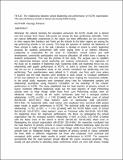| dc.description.abstract | ABSTRACT
In Kenya, the church missionaries were the initiators of education. They built their schools and maintained them, hence, the genesis of church participation in schools. Education was an important integral part for evangelization and moral formation for the recipient Africans. This study intended to investigate the challenges facing academic performance in mission owned schools in Isiolo County and to make recommendations to improve the performance. Descriptive survey design was used and mission owned both primary and secondary schools in Isiolo County formed the study population. Since there are only three secondary and five primary schools the whole population was studied. The participants constituted the five head teachers, three principals and Education Secretary. The total enrolments of students was 1560 the enrolment of standard eight pupils was one (148) who formed the sample to represent primary schools, while those in form four were90 total number of Parents Teacher Association (PTAs) members was72 while Board of Governors members were thirty nine (39), The school Management Committee were 65 in number resulting to 1745 participants. The sample size was 224 respondents who were randomly sampled. Questionnaires, interview and observation schedules were used as tools for data collection. The instruments had achieved a reliability coefficient of 0. 7. The study generated qualitative and quantitative data. Quantitative data was coded, grouped and entered into a computer for analysis using the SPSS software program. Qualitative data was presented thematically in line with the objectives of the study. The results of data analysis were presented using frequency distribution tables, bar graphs and pie charts. The study found that the average annual school fees collection was 50%-75%. The main sources of funding other than parents were donor funds. The sponsor supports the school. The study concluded that provision of quality education infrastructure is an expensive venture which forces such institutions have simmering row between parents, sponsor and the government. The management put parents' contribution through fees into good use such as paying salaries and other development activities. It was recommended that there is need to seek the private sector support to complement government efforts in providing education. Current education reform policies in Kenya encourage potential contribution of private sector, however, the issues affecting private sector in primary and secondary education have not been assessed adequately; School atmosphere should be conducive to the learning and overall development of children; Physical facilities should be adequate and well maintained. There is need to engage Head teachers who are• qualified in relevant courses in education as well as teachers specialized in relevant subject areas should be recruited, and finally a school strategic plan should be put in place. | en_US |




